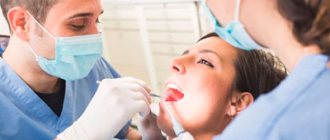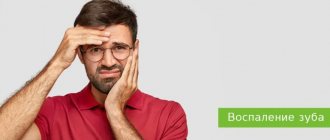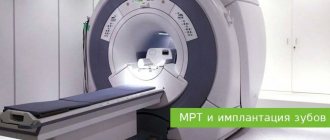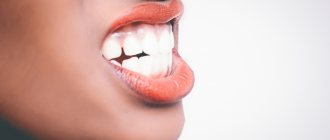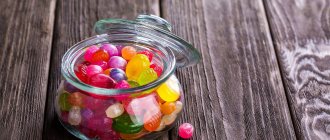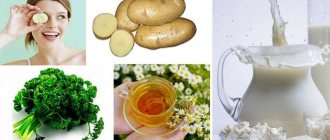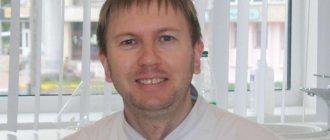The installation of a dental root substitute into the jawbone is carried out in strict compliance with the requirements of the relevant protocol. But even if there are no mistakes and the surgeon’s work is of high quality, failures can happen. The likelihood of rejection is very small, only 0.5–2%, but it exists. How to understand that a dental implant has not taken root and will have to be removed? It is not the patient, but the implantologist who must recognize such a situation and take the necessary measures. But it is also useful for a non-specialist to know about the signs of artificial root rejection.
Causes of pain
There are many reasons why a dead tooth may begin to cause pain. Most of them are associated either with the lack of adequate treatment and care, or with the development of the inflammatory process. The most common reasons are:
- Incomplete nerve removal. If the nerves were not completely removed, the tooth will hurt in case of the slightest inflammation.
- Poorly cleaned channel. After the nerve is removed, the dead tooth is filled, but if the canal was poorly or incompletely cleaned, microscopic particles remain under the filling material. Over time, they cause inflammation and, as a result, pain.
- Poor quality filling. When filling, the material must be inserted into the canal completely, to the very end. If part of the canal is not sealed, pathogenic microflora begins to develop there. A variant of this reason can be considered the use of low-quality filling materials. They quickly collapse, causing the channel to open.
- Inflammatory processes in the gums or periosteum. Inflammation that develops next to a dead tooth begins to spread to nearby tissues, causing pain.
Whatever the reason, if a dead tooth starts to hurt, you need to contact a dentist. Delay can lead not only to the destruction of the crown, but also to the rapid spread of inflammation.
How does normal “engraftment” of an implant proceed?
Normally, almost immediately after installation of the implant, the process of fusion with bone tissue begins. This is the same osseointegration that implant surgeons talk about. It occurs in three stages:
- Elementary. Lasts up to four weeks. During this period, loose spongy bone tissue forms around the implant. Chewing loads should be limited for now.
- Intermediate. Takes on average 17 weeks. By the end of this period, all the spaces between the titanium rod and the surrounding bone areas are filled with denser, hard tissue.
- Final. Lasts up to 1.5 years. The root substitute finally fuses with the bone and forms one whole with it.
The implant acquires sufficient stability in the bone even before osseointegration is complete. Approximately three to five months after installation of the artificial root, it can be loaded with a crown.
Symptoms
Most often, painful sensations occur during chewing or eating hot or cold food. Some patients complain of almost constant, aching or throbbing pain.
The inflammatory process can develop rapidly. In this case, the pain is usually sharp and severe. May be accompanied by swelling of the gums and swelling of the face. Sometimes the inflammation lasts for years, and since the patient does not experience severe pain, he delays the visit to the dentist, aggravating the situation.
What to do if a dead tooth hurts
At the first appearance of pain, you should contact your dentist. Since in most cases pain is a consequence of the inflammatory process, the doctor must carry out a diagnosis.
It is imperative to assess the condition of the gums, diagnose (or exclude) diseases such as periodontal disease, periodontitis, etc. Gum disease is difficult to treat, and timely diagnosis will help to prescribe the right treatment in time.
After diagnosis, the doctor prescribes treatment aimed at eliminating the causes of pain:
- If inflammation is detected, anti-inflammatory drugs or antibiotics may be prescribed.
- The old filling is removed, the canals are cleaned, and the filling is performed again.
- The darkened crown of the dead tooth is additionally whitened to restore the aesthetics of the smile.
If you have a problem similar to that described in this article, be sure to contact our specialists. Don't diagnose yourself!
Why you should call us now:
- We will answer all your questions in 3 minutes
- Free consultation
- The average work experience of doctors is 12 years
- Convenient location of clinics
Single contact phone number: +7
Make an appointment
A specific treatment plan is prescribed individually, based on the results of the examination and the general condition of the patient’s teeth and gums. Sometimes pain in a dead tooth is a consequence of a whole range of dental problems.
Homeopathy
REPORT READ BEFORE THE MEDICAL SOCIETY OF MUNSTER IN 1835*
I believe that this scientific community, in whose ranks I have the honor to belong, expects that the topic of my report will have something to do with homeopathy. In response to these expectations, I will try to briefly explain how a drug that produces a painful condition in a healthy subject alleviates a similar natural disease. In order to attract your attention with interesting examples, I choose a complaint that, although in fact not very dangerous, often, due to severe pain, brings the patient almost to despair. Conventional treatment can cure this condition only by completely removing the problem. However, Materia Medica has a large number of remedies to alleviate this ailment, and it is impossible to completely get rid of it without the use of a specific medicine. It's about toothache
.
Without a doubt, there are not many people in the civilized world who do not suffer to a greater or lesser extent from this disease, and everyone knows how little help so-called rational medicine can provide here. Apart from removing the diseased tooth, there are very few other remedies available, and they are applicable only in a few cases, and even then the results are very doubtful. Therefore, they first resort to all sorts of known home remedies (often with great harm to health), and then, without experiencing relief, the patient goes to the dentist for removal, although he understands that the tooth will be lost forever. Experience has shown that after such help, the next tooth is often involved in the process.
Homeopathy does not claim to cure all the different types of toothache instantly or permanently, but it can bring relief to a great many patients in the same way that it works to cure any other disease. According to the principles of homeopathy, toothache is only a symptom of the inner turmoil of the vital force; this symptom never exists on its own, but is a consequence of or accompanied by many other symptoms, although the latter are so vague and few in number that they are not visible at first glance, and are revealed only by careful examination.
The totality of the symptoms of a disease gives us a perfect picture of the disease itself and points to the most effective remedy in accordance with the great principle of “similia similibus curantur”. Just as a painter cannot create a perfect portrait by depicting only one part (eyes, nose or mouth), a homeopath cannot cure a disease by looking at only one symptom. What distinguishes a good homeopath is that he collects all the symptoms available and then analyzes the most prominent ones. Therefore, the difference between allopathy and homeopathy is that in the former, several medicines are mixed to cure a disease, while in the latter, a single remedy is used according to the condition of the patient or, more precisely, the symptoms present. Therefore, it is necessary for the homeopath to know all types of pathogenetic effects of the medicine he chooses.
In homeopathy, many medicines are known that cause toothache in healthy people. On these pages it is impossible to list all the types of toothache and methods of their homeopathic treatment; I will give just a few examples of how homeopathy works in such situations. To do this, I chose a specific but common type of toothache, namely, jerky, or throbbing, pain. There are thirty-five drugs that cause this kind of pain, but I use only sixteen of them and get the best results.
I. After hypothermia in the east wind, a fever often occurs with a rush of blood to the head with a burning heat in the face, a rapid, hard pulse and marked physical and mental agitation. To these symptoms can be added severe throbbing toothache, mostly one-sided and covering the entire jaw, accompanied by redness of the cheek. In such cases the specific remedy will be Aconite.
.
II. Another type of throbbing toothache, often caused by exposure to cold, but not accompanied by heat, can be cured with Causticum
. This pain is almost always accompanied by painful sensitivity, swelling and bleeding of the gums with a nagging pain in the muscles of the face, eyes and ears.
Last winter I myself suffered in this way for several days
, because I did not understand which remedy to choose in the absence of other fundamental symptoms.
Having tried many remedies to no avail, I was cured in two hours by one dose of Causticum
, and have never suffered from this kind of toothache since.
The toothache for which Causticum
will always be of a chronic nature.
Causticum
has a long-lasting medicinal effect, and drugs whose action is limited to a short period of time will never affect this type of toothache.
III. Chamomilla
very effective for throbbing toothache, especially in women and children. The toothache, which this medicine will relieve, is almost always intolerable at night and is aggravated by the warmth of the bed, driving the patient to despair and causing him to moan and thrash about. Usually there is redness of one cheek, the hair is damp, there is pronounced thirst and swelling of the submandibular glands.
I remember several years ago my wife suffered from this type of toothache. Since I was away, Dr. B., who was then treating my suffering wife, first gave her Aconite
due to the symptoms of fever, and since the suffering did not decrease, the next day he gave her
Pulsatilla
, which did not bring the slightest relief;
Bryonia
was prescribed , but this remedy did not help either.
Now Dr. B. decided that homeopathy alone was not enough here, and on the fourth day he put eighteen leeches and gave a mixture, which initially led to some relief, but after a quarter of an hour these severe pains resumed and became unbearable. On the fifth day, at four o'clock in the afternoon, I returned from my trip to find my wife in great pain. After inquiring about what had been done for her and carefully assessing her condition, I gave her one dose of Chamomilla
. At five o'clock the pain stopped and the swelling of the cheek disappeared.
IV. Type of Throbbing Toothache Treated by China
, is quite rare.
In this connection I usually remember an incident that happened to me while I was traveling around the country. A young girl with a beautiful figure and sweet appearance was pale and gaunt when I met her again. She suffered from a severe throbbing toothache, worse chiefly after eating and at night, and relieved somewhat by firm pressure and biting, while a light touch made the pain unbearable. At the same time, she suffered from prolonged diarrhea and profuse night sweats; she was very weak and could hardly walk. She asked me to relieve her suffering, and I gave her a small dose of China
.
The next morning, when I set out on the road, she reported with extraordinary enthusiasm that the night had passed peacefully, there was no toothache and the sweating had also disappeared, and when I saw her a few months later, I found her sweet and blooming again. This is exactly the kind of toothache that can be caused by overusing quinine; I have already observed it twice in young people who were in the habit of drinking cinchona brandy every morning. It is clear that in such cases China
will not be the best medicine.
All the symptoms were cured in the first case by Arnica
, and in the second by
Pulsatilla
; both remedies corresponded more to the general symptoms than to the throbbing pain.
V. Patients who usually suffer frequently from throbbing toothaches are almost always cured by Aconite
,
Chamomilla
,
Ignatia
,
Nux
or
Pulsatilla
.
However, throbbing pains also occur in patients who never drink coffee, and Coffea cruda
.
Last Christmas I was invited to visit a friend's family; the whole family strictly followed a homeopathic diet and never drank coffee. The owner suffered from severe toothaches of a pulsating nature: she rushed from one room to another and complained of unbearable pain. Although she admitted that at times the pain subsided, the latter was still very strong. The patient interrupted her story about the pain by crying and was in a hurry. The last circumstance struck me most of all, because before the illness I knew her as a steadfast and calm person.
I immediately gave her a small dose of Coffea cruda
6, and in two minutes the throbbing pains disappeared, and the remaining sensitivity of the affected part was removed five minutes later by
Ignatia
. The rest of the evening went as usual; the entire week that I stayed there, nothing like this happened again. A few days ago I saw her again, and she reported that since then she had not had a single attack of toothache.
VI. The north pole of the magnet has an unusually rapid effect on pulsating toothaches.
The pulsation is almost always accompanied by a burning sensation and is localized in the lower jaw. The cheek becomes hot and red. Worsening from heat and after eating. Typically, the patient experiences chills throughout the body, severe irritability, trembling and twitching of the limbs. This type of toothache occurs most often in spring and autumn. Healing is achieved quite quickly when the patient keeps his index finger on the north pole of the magnet while the pain increases.
I cannot refrain from mentioning the case of the application of a magnet, which, although not completely successful, nevertheless demonstrated its powerful effect.
One evening one of my servants came into my office with a request to relieve a toothache that began at four o'clock in the afternoon and was getting worse all the time. The pain was throbbing and localized in the upper jaw. As all the symptoms except the last pointed to the north pole of the magnet, I immediately applied it (the force of the magnet was sufficient to lift two ounces), but as soon as I touched the magnet with my finger, he grabbed his cheek with the other hand and exclaimed: “Oh, she jumped down.” !” (1 ounce is equal to 28 g - Translator's note). The pain just shifted from the upper jaw to the lower, remaining just as strong. Undoubtedly, this displacement of pain was caused by the north pole of the magnet, and no cure could be expected from it. Then I asked the servant to hold the south pole of the magnet, which, according to experience, eliminates the influence of the north pole. What I expected happened. As soon as he touched the south pole, he exclaimed: “Oh, she jumped up again!” So I found out what I wanted and soon gave him Pulsatilla
, which led to a complete cure, and it was not imaginary.
VII. I do not know whether there is a syphilitic throbbing toothache for which Mercurius
, for it has the power of producing in healthy persons all the chief symptoms of syphilis, but there is a throbbing toothache caused by the abuse of
mercury
.
This pain intensifies in the evening, in bed, and lasts until midnight and even all night, preventing the patient from sleeping. Acidum nitricum
is usually indicated for such pain .
Two months ago I was treating a young man who had contracted gonorrhea some time previously and was being treated by a young doctor who probably had very little experience in such diseases. This patient entered the office in great despair and initially spoke of his miserable situation and suicide, without mentioning his illness. Having received support and encouragement from me, he told about his sufferings and showed the palate, eaten away by chancre; the gums were covered with ulcers and thick, swollen yellow crusts, the tongue had ulcerated edges, and it seemed to the patient that it would fall off; the fear of losing this organ, which he believed could not be avoided, filled him with deep anxiety and forced him to think about suicide. The gonorrhea disappeared, but the above symptoms appeared instead. I immediately realized that this was a case of mercurialism.
So I first gave him a small dose of Hepar sulph.
, after which the next day the palate and gums began to look completely different, and the patient began to enjoy life again.
Two days later the above-mentioned toothache became worse, so I gave him Acidum nitricum
in high potency, and on
the fourth
day the newly exhausted patient came to me comparatively well.
I saw him again several times, and he felt as healthy as ever, after I cured
his reoccurring gonorrhea of Petroleum
VIII. Only once with throbbing pain in Platina
turned out to be a specific medicine.
The pain was like a pulsating drilling through the entire right side; aggravated mainly in the evening and at rest, from which the patient began to scream involuntarily several times. At first it seemed to me that Pulsatilla
, but it did not help.
The next day I asked the patient’s friend in more detail about the accompanying symptoms and immediately understood why Pulsatilla
didn't work.
Throbbing pain was accompanied by numbness of the entire affected part. At the same time, menstruation was too early and abundant, and her state of mind had recently begun to show pride with arrogance and contempt for others, which she had never had before. And here any homeopath would prescribe Platina
, which is what I did, achieving in a few hours the cure of not only toothache, but also putting my state of mind in order. The monthly cycle also became regular as before.
IX. Pulsatilla
often indicated for throbbing toothaches. There is one pleasant memory connected with this, which I will gladly share with you.
About three years ago, while traveling around the country, I arrived in the evening at a hotel, where I met my friends living in the neighborhood, and among them was the local landowner’s doctor. A few minutes after my arrival, the eldest daughter of the family turned to me with a request to cure her toothache. She told me that it had been going on for more than two weeks; the pain comes after sunset and continues until midnight, and it was not possible to find anything that would bring lasting relief; only a walk in the fresh air or staying at an open window somehow alleviates the pain. These words were confirmed by the doctor. The place was not the most convenient for detailed questioning about other complaints, so I gave her one dose of Pulsatilla
30. The result exceeded my expectations: before I had time to put the first aid kit back in its place, she, to the surprise of the whole company, exclaimed: “The pain is completely gone!” The young doctor, who had recently received his diploma, said, amazed, that if this pain relief were permanent, it would be most amazing.
In response, I hypothesized that if Pulsatilla
acted so quickly, then her other characteristic symptoms must also be present, and answered him that if the patient follows the rules of the homeopathic diet for just one week, she will not only get rid of toothache forever, but will also be cured of other complaints that she has. there may be some. The young doctor was very puzzled and asked what symptoms he was talking about.
I told him some of the characteristic symptoms of this remedy, namely: great trembling, great thirst (probably a typo here: for Pulsatilla
thirst is not typical.
— Approx.
translation ), unbearable fever, insomnia until midnight, poor appetite, aversion to fatty foods, etc. Then he assumed that I had found out these features in advance, and when it was proven that I had just arrived and had not examined the patient, he was annoyed exclaimed that her relatives had agreed with me to play a prank on him. I replied that I could tell him something else privately, and then he would ask if it was true. Having received consent, I informed him that the patient also suffered from mucous diarrhea, that her periods came too late, at intervals of five weeks, and lasted only a few days with back pain and abdominal cramps. He went to the patient and pretended that I had told him that she was constipated and her periods were coming too early and too heavy. She replied that I was mistaken here, since her complaints were exactly the opposite, and everything she answered to his questions exactly coincided with what I had told him before. A few months later I saw this girl again, and she happily thanked me for curing all her complaints. Whether this young doctor subsequently began to study homeopathy I do not know, but I doubt it, since I have not heard anything from him since then.
X. Rare medicines used for throbbing toothache include Sabina
.
I have only found this remedy to be specific on a few occasions. This type of toothache also appears in the evening or at night, especially if the patient gets warm in bed, and also after eating; feeling that the tooth will burst; pulsation in the vessels, frequent empty belching, and in women the discharge of copious light blood even outside of menstruation. Once a gouty pain in the toe of the right foot was relieved by external medicine, and subsequently the type of toothache we describe appeared, quickly cured by one dose of Sabina
.
However, neither the toothache nor the gouty pain ever returned, just as I predicted, since the toe pain and toothache are covered by Sabina
.
XI. More often we encounter chronic pulsation in the teeth with shooting pains, for which only Sepia
(not ossa, but succus sepiae). Typically, such toothache occurs in people with a sallow complexion, radiates to the ears and hands to the fingers with tingling in the latter and is often accompanied by difficulty breathing, swollen cheeks, cough and enlargement of the submandibular glands. This medicine is especially indicated for throbbing pain in pregnant women. Relief is quickly achieved even from the smallest dose.
XII. Throbbing pain cured by Silicea
, is roughly similar to
Sepia
in sensation and other symptoms, but
Silicea
is more characterized by swelling of the periosteum of the lower jaw rather than the glands.
The pain is localized in the jaw bone rather than in the tooth itself, and the patient is unable to sleep due to the general fever. Usually, the skin is unhealthy and suppurates from the slightest wound. Several months ago I myself suffered from such a toothache, accompanied by swelling of the lower jaw bone to the size of a walnut. As soon as I saw this I took one small dose of Silicea
, which immediately stopped the pain and the swelling of the bone disappeared the next morning.
XIII. One of the most effective medicines against throbbing toothache is Spigelia
.
With this type of facial pain there is always a strong squeezing and burning pain in the malar bone, accompanied by pallor and swelling of the face with a yellowish areola around the lower eyelid. In addition, the patient experiences aching pain in the eyes, a strong heartbeat, often with a feeling as if a cat is purring in the chest, a frequent urge to urinate with the release of large amounts of urine, trembling and restlessness. Last year I cured with one very small dose of this medicine a woman of strong constitution who was suffering from the above symptoms. Among these symptoms, the most prominent were dental and facial pain; both, and especially the last one, recurred twice a week for several years and were almost unbearable. After a dose of Spigelia
both pains disappeared and did not return.
XIV. Hyoscyamus
indicated for another more common type of throbbing pain.
This pain usually occurs in the morning and is almost always caused by cold. A throbbing pain is felt in the tooth itself, while tearing pain predominates in the gums, and when chewing, the tooth seems to be loose, as if it is about to fall out. There is always a rush of blood to the head with intense heat throughout the body. With severe painful attacks, there is a feeling of suffocation with difficulty swallowing and spasms with a feeling of mental fatigue. One small dose of Hyoscyamus
will quickly remove this complaint.
Two years ago, when I was traveling, I was able to cure with this medicine a young girl who had fallen ill due to jealousy and anger at her former lover who had abandoned her. She complained of a throbbing toothache worsening after midnight, had a fever with marked redness of the face, and prolonged bouts of delirium during which she tried to escape, requiring supervision. The first dose of Hyoscyamus
removed the toothache and delirium, and the second dose, which I reserved to give the patient a week later, cured all other complaints.
XV. Sulfur
It is also an excellent remedy for throbbing toothache, especially if the skin rashes have been suppressed by any kind of ointments.
The gums almost always swell; there is a feeling of pulsation both in them and in the tooth itself. This is associated with very strong sensitivity of the tooth crown, a rush of blood to the head and a throbbing headache. There is also redness and inflammation of the eyes and nose in the evening, shooting pain in the ears, frequent but ineffective urge to stool, constipation and trembling. But it often happens that all these symptoms are caused by the abuse of sulfur, and then Sulfur
will only aggravate them.
XVI. And finally I will mention Veratrum
, which is very rarely prescribed for throbbing toothache.
It will be useful if the pain is accompanied by swelling of the face, cold sweat on the forehead, nausea and vomiting of bile, a feeling of bruising in the limbs, severe loss of strength to the point of fainting and coldness of the whole body with internal heat and a strong desire for cold drinks. All these symptoms were completely cured by Veratrum
.
This is a short list of different types of throbbing toothache, characterized by a significant variety of symptoms. It is not difficult to imagine how much this variety will increase, and with it the difficulty in choosing a suitable remedy, if we add to the consideration other types of toothache - pressing, burning, shooting, cutting, drilling, etc., and here much more will be required number of medications. From this we can draw two conclusions.
First. There is no reason to pretend that homeopathy does not require study and that wading through masses of symptoms to select the right remedy is a mere pastime unworthy of a man of intelligence.
Second. The principle of homeopathy is never to blame for the fact that the wrong medicine does not work. “The numerous amazing facts that have been collected,” says Professor Eschmeyer of Tübingen in his brochure “Comparison of the principles of homeopathy and allopathy,” “do not give rise to the slightest doubt. But despite the fact that this science is in its infancy and despite the fact that a reasonable person cannot and will not expect from it what he has a right to demand from a teaching that has stood the test of centuries, homeopathy not only stands the test of rigorous scientific experimentation, but and gives us some new principles that lead us to comprehend more complex physiology and pathology. So let's find out what she's capable of.
".
With these words , “let us therefore find out what it is capable of
,” I conclude my short and far from perfect report with sincere gratitude for the noble and dignified reception from colleagues who, although not yet favorable to the new doctrine, in accordance with the words philosopher, "they will find out what homeopathy can do" until the truth or error of the new doctrine becomes clearer.
NOTE
*Translated from Volume 15 of the Archives by Dr. Suess, to whom we express our warmest gratitude. Our recognition will be still greater if we can show in 1852 the same practical and comprehensive acquaintance with Materia Medica as our veteran Boenninghausen showed in 1835. — Publisher of the American Journal of Homyopathies.
From a letter to Dr. Shtapf Contents Homeopathic diet. Description of the disease
Prevention
If you have dead teeth, care must be taken to preserve them. A crown that does not receive nutrients is fragile. Over time, it can deteriorate and tooth mobility appears. Prevention of diseases in such diseases is very important.
It is imperative to ensure proper daily oral hygiene. Teeth should be brushed with a suitable toothpaste; the brush should not have very hard bristles. After eating, you need to rinse your mouth with special compounds. This will help get rid of food debris and minimize the risk of developing plaque, tartar, and the proliferation of pathogenic microorganisms.
It is important to undergo regular examinations by the dentist, and at the first appearance of pain or signs of disease, immediately go to see a doctor for diagnosis and treatment.
